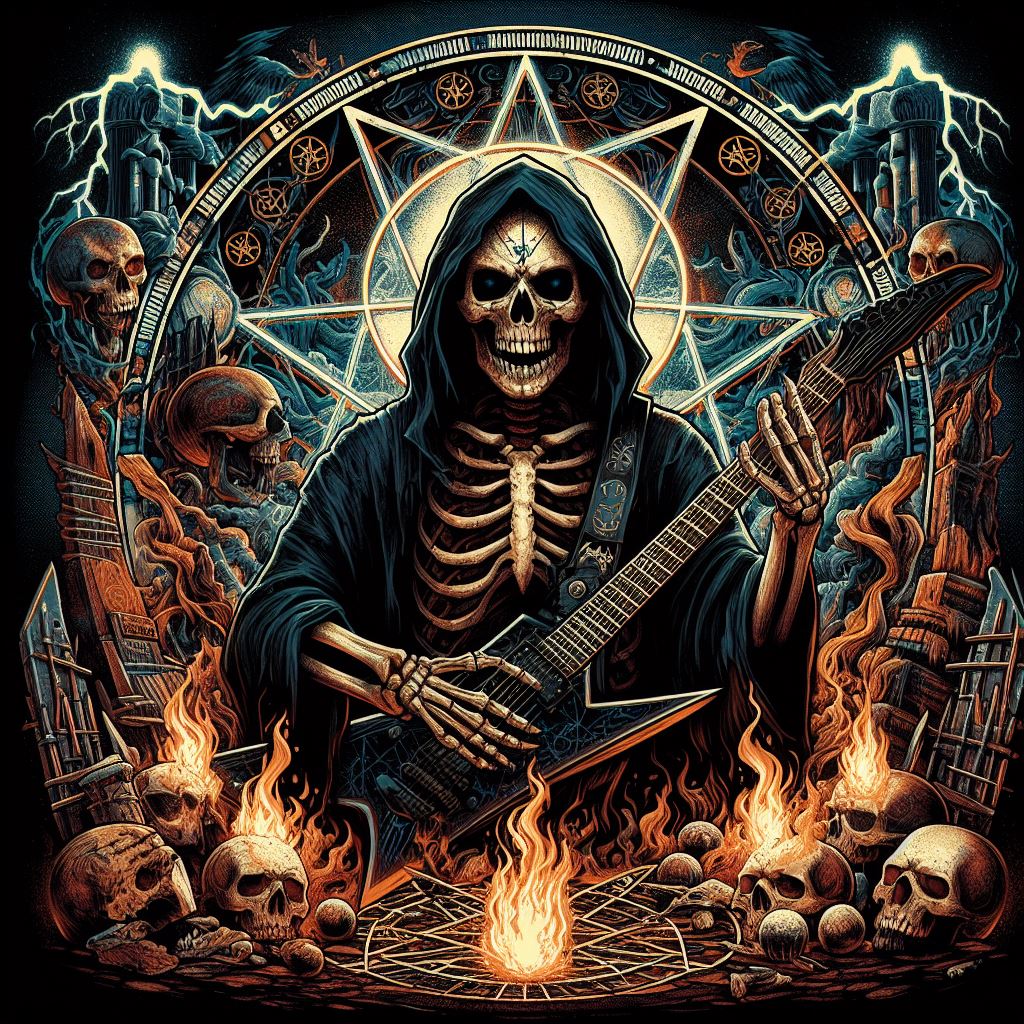Megadeth, a name synonymous with thrash metal’s aggressive energy and intelligent lyricism, boasts a rich history marked by innovation, controversy, and enduring influence. Founded in 1983 by Dave Mustaine, the band’s story is intricately linked to the rise of thrash metal and its own tumultuous journey.
Fired Up and Forged Anew (1983-1985):
Mustaine, a talented guitarist, found himself fired from Metallica, his band at the time. The story goes that his volatile personality and substance abuse issues led to the ousting. Fueled by anger and a desire to prove himself, Mustaine formed Megadeth. Joined by bassist David Ellefson, Megadeth quickly established a distinct sound. Their music incorporated the breakneck speed and intensity of thrash with Mustaine’s intricate guitar work and lyrics tackling war, politics, and social issues.
Early Success and Thrash Titans (1985-1990):
Their debut album, “Killing Is My Business… and Business Is Good!,” released in 1985, solidified their place in the burgeoning thrash scene. Subsequent albums like “Peace Sells… but Who’s Buying?” (1986) and “Rust In Peace” (1990) cemented their reputation as thrash titans. These albums boasted iconic tracks like “Holy Wars…The Punishment Due” and “Hangar 18,” showcasing Mustaine’s sharp songwriting and the band’s technical prowess. Megadeth, alongside Metallica, Slayer, and Anthrax, became known as the “Big Four” of thrash metal, responsible for popularizing the genre.
Commercial Experimentation and Lineup Shifts (1990-2000):
The 1990s saw Megadeth experiment with a more commercial sound. Albums like “Countdown to Extinction” (1992) incorporated radio-friendly ballads while retaining their signature thrash elements. While commercially successful, these changes alienated some fans who preferred their earlier, raw aggression. This decade also saw numerous lineup changes, with guitarists Marty Friedman and Nick Menza departing.
Challenges and Resilience (2000-2010):
The new millennium brought further challenges. Mustaine suffered a serious nerve injury that hampered his guitar playing. The band continued releasing albums like “The World Needs a Hero” (2001) but struggled to recapture the heights of their earlier work. Despite these obstacles, Megadeth persevered, touring and releasing music with a revolving cast of musicians.
Reunion and Continued Legacy (2010-Present):
In 2010, a long-awaited reunion with original bassist David Ellefson took place. This revitalized the band, leading to critically acclaimed albums like “Dystopia” (2016) and “Super Collider” (2016). Megadeth continues to tour and record, remaining a force in the heavy metal scene. Their influence on countless metal bands is undeniable, and their music continues to resonate with fans worldwide.
A Legacy of Innovation and Controversy:
Megadeth’s story is not without its controversies. Mustaine’s outspoken personality and contentious relationship with Metallica have fueled headlines throughout their career. Yet, there’s no denying Megadeth’s immense contribution to heavy metal. Their complex music, thought-provoking lyrics, and relentless pursuit of innovation have secured their place in the genre’s hall of fame.
From the fiery beginnings to their enduring legacy, Megadeth’s story is a testament to the power of passion, perseverance, and the enduring appeal of heavy metal.

Leave a Reply
You must be logged in to post a comment.